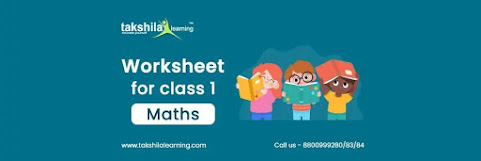CBSE & NCERT Maths Worksheet For Class 1
Worksheet for class 1 Maths: Our free online mathematics worksheets are a great way for first-graders to study and practice math. Introduce and study addition and subtraction fact families for first graders with these free and printable mathematics worksheets.
This free 1st-grade mathematics worksheet allows your child to practice math strategies. To help your child understand addition and subtraction, use a free printable mathematics worksheet for first grade.
This fun first-grade mathematics worksheet shows your kid how additions, multiplication, division, and subtractions of the numbers actually work.
a. _____98
b. _____55
c. _____64
d. _____99
2. What comes after:
a. 9 ______
b. 30 ______
c. 56 ______
d. 89 ______
3. What comes between :
a. 99 ______ 101
b. 90 ______92
c. 59 ______61
d. 55 ______57
4. Addition
a. 55 + 57 =
b. 35 + 17 =
c. 10 + 22 =
d. 63 + 23 =
5. Near a lake, there were 42 cranes and 27 swans. What is the total number of swans and cranes?
Use this first-grade math worksheet to help your child improve his summation skills. These online first-grade mathematics worksheets will help your child progress in his math education. Use this first-grade mathematics worksheet to help your child understand the significance of numbers and why they are important. Use this fun first-grade math worksheet to help your child learn the basics and build a strong mathematical base.
Click Here For Complete Maths Worksheet for class 1
Download Maths Worksheet Numbers Before, After, and Between Here.
Takshila Learning provides learning modules for online classes for primary students. Online Class 1 to Class 12 You can Learn with our animated video lectures and watch our online recorded lectures at your convenience. learn and practice all concepts of Maths and other subjects. We provide online tuition classes for Class 1 online classes to class 12 students. To know more register with us at www.takshilalearning.com.

Comments
Post a Comment
Thank you we will contact ASAP.